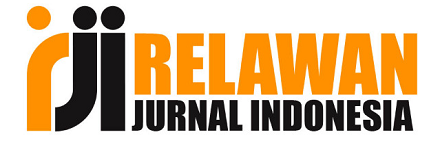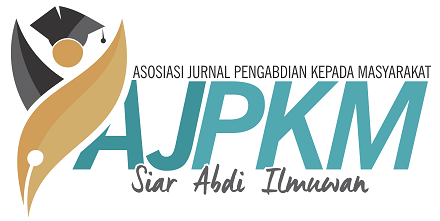Peningkatan potensi desa wisata melalui pengembangan kemasan oleh-oleh
DOI:
https://doi.org/10.33474/jipemas.v4i1.9049Keywords:
gift packaging, safe, easy, environmentally friendlyAbstract
The development of Café Sawah as Village Tourism in Pujon Kidul is very important because it has an impact on improving the community's economy. So far, various dairy products by MSEs that are fostered by ‘Aisyiyah are sticks and crackers as typical souvenirs from Pujon Kidul Tourism. The souvenirs are still not packaged attractively. Product packaging is an effective marketing strategy in managing the end of production, until it is accepted by the end consumers. As a tourist area that is crowded with visitors, good and effective processing of souvenirs is a solution that can be offered to visitors as souvenirs. The purpose of this community service is to improve good packaging, elegant design, easy to carry and able to maintain the quality of the product during the trip. This community service methods are observation, audience and active participation, in order to increase the value of souvenir products with more attractive packaging, safe and comfortable, with local wisdom. The result of this community service is packaging that has an attractive design, an elegant impression of the product, improving of the product values, and so, it becomes a promotional medium when it is brought to a new place as a souvenir, and then, it will subsequently have impact on increasing the welfare of the surrounding community, especially MSEs fostered by ‘Aisyiyah.
References
Adiyanto, O., Jatmiko, H. A., & Erni. (2019). Development of food packaging design with kansei engineering approach. International Journal of Scientific and Technology Research, 8(12), 1778–1780.
Amelia, D., & Oemar, E. A. (2017). Perancangan Desain Kemasan Peppy’s Snack Surabaya. Jurnal Seni Rupa, 5(3), 584–590. https://jurnalmahasiswa.unesa.ac.id/index.php/va/article/view/21695
Apriyanti, E. M. (2018). Pentingnya Kemasan terhadap Penjualan Produk Perusahaan. Sosio E-Kons, 10(1), 20–27. https://doi.org/10.30998/sosioekons.v10i1.2223
Bernardo, E., & Rodrigues, V. (2020). Buying Sweet Memories: The Heritagization of Food Souvenirs in Northern Portugal. Journal of Gastronomy and Tourism, 4(3), 129–140. https://doi.org/10.3727/216929720x15846938924003
Buku Pintar Dana Desa, Kemenkeu RI 113 (2017).
Dharmeria, V. (2014). Analisis pengaruh keunikan desain kemasan produk , kondusivitas. Jurnal Sains Pemasaran Indonesia, 13(1), 1–44. https://doi.org/10.14710/jspi.v13i1.1-44
Dumbrovská, V., & Fialová, D. (2020). The city of one hundred souvenir shops: authenticity of souvenirs in Prague. Journal of Tourism and Cultural Change, 18(2), 187–200. https://doi.org/10.1080/14766825.2019.1606228
Gema, A. J., Sabartua, T., Priwanto, B., Triharyanto, E., Susantiningrum, S., Sutrisno, J., Firzan, M., Budiman, A., Raharjo, P. B., Kuswanto, G., Sari, D. I. D., Lee, R., Kurniawan, R. M., & Hasin, N. (2018). Panduan Pendirian Usaha Disain Kemasan (A. L. Riani & N. Widyamurti (eds.)). Badan Ekonomi Kreatif & Universitas Sebelas Maret.
Hartanti, M., Lukman, C. C., & Nina Nurviana. (2020). Representation of Women in Food Souvenir Packaging in Bandung, Indonesia, 1950 to 2018. International Journal of Visual Design, 14(2), 1–2. https://doi.org/10.18848/2325-1581/CGP/v14i02/1-19
Huang, S. C. L., Wang, C. Y., & Yan, Y. R. (2020). Motivational typology of online food souvenir shoppers and their travel-related intentions. Sustainability (Switzerland), 12(18). https://doi.org/10.3390/su12187624
Kidul, P. (n.d.). Desa Wisata.
Lemy, D. M., Darmawan, D., & Tjokromulia, J. P. (2019). Food Souvenirs From Bali – What Matters for Tourists From Jakarta? Journal of Business on Hospitality and Tourism, 5(2), 298–306. https://doi.org/10.22334/jbhost.v5i2.169
Lestari, F. D., & Sunarti. (2019). Pengaruh Motivasi Terhadap Keputusan Berkunjung (Survei Pada Pengunjung Desa Wisata Pujon Kidul Kabupaten Malang). Jurnal Administrasi Bisnis (JAB), 70(1), 29–35. http://administrasibisnis.studentjournal.ub.ac.id/index.php/jab/article/view/2811
Mahmud, M. Z., Widayat, & Rahmad Wijaya. (2020). Causality Model Of Consumer Purchase Intention On Environmentally Friendly. 10(02), 36–50. https://doi.org/10.22219/jmb.v10i2.14791
Mayrowani, H. (2013). Kebijakan Penyediaan Teknologi Pascapanen Kopi dan Masalah Pengembangannya. Forum Penelitian Agro Ekonomi, 31(1), 31. https://doi.org/10.21082/fae.v31n1.2013.31-49
Mufreni, A. N. (2016). Pengaruh Desain Produk, Bentuk Kemasan Dan Bahan Kemasan Terhadap Minat Beli Konsumen (Studi Kasus Teh Hijau Serbuk Tocha). Jurnal Ekonomi Manajemen, 2(2), 48–54. https://doi.org/10.37058/jem.v2i2.313
Purbaya, A. G. (2016). Strategi Peningkatan Kesejahteraan Ekonomi Masyarakat: Kasus Pengusaha Krupuk Dan Camilan Hasil Laut di Pantai Kenjeran Lama Surabaya. Oeconomicus Journal of Economics, 1(1), 71–98. https://doi.org/10.15642/oje.2016.1.1.71-98
Purnomo, N. C., Ardana, I. G. N., & Handoko, C. T. (2013). Perancangan Kemasan Dan Media Promosi Kue Gandjelrel Khas Kota Semarang. Jurnal DKV Adiwarna, Universitas Kristen Petra, 1(2), 1–7. http://publication.petra.ac.id/index.php/dkv/article/view/714
Purwantara, S., Hastuti, & Khotimah, N. (2019). Pemberdayaan Perempuan Dalam Pemanfaatan Sumberdaya Perdesaan. 53(9), 1689–1699. https://doi.org/10.1017/CBO9781107415324.004
Peraturan Pemerintah 60 Tahun 2014 tentang Dana Desa, 1 (2014).
Sururi, A. (2015). Pemberdayaan Masyarakat Melalui Program Pembangunan Infrastruktur Perdesaan Dalam Meningkatkan Kesejahteraan Masyarakat Kecamatan Wanasalam Kabupaten Lebak. Jurnal Administrasi Negara, 3(2), 1–25. https://doi.org/10.30656/sawala.v3i2.229
Tandiontong, M., Carolina, V., & Sitanggang, F. (2010). Pengaruh Biaya Kualitas Terhadap Tingkat Profitabilitas Perusahaan ( Studi Kasus pada The Majesty Hotel and Apartment , Bandung ). Akurat Jurnal Ilmiah Akuntansi, 2, 1–17.
Tyas, A. S. P. (2017). Identifikasi Kuliner Lokal Indonesia dalam Pembelajaran Bahasa Inggris. Jurnal Pariwisata Terapan, 1(2), 38. https://doi.org/10.22146/jpt.24970
Vicki, F. (2019, September). BUMDes picu pertumbuhan inklusif ekonomi masyarakat. AntaraNews.Com.
Wisata, D. B. I. P. 1. 73. D. (n.d.). Data BPS: Indonesia Punya 1.734 Desa Wisata.
Downloads
Published
How to Cite
Issue
Section
License
.









